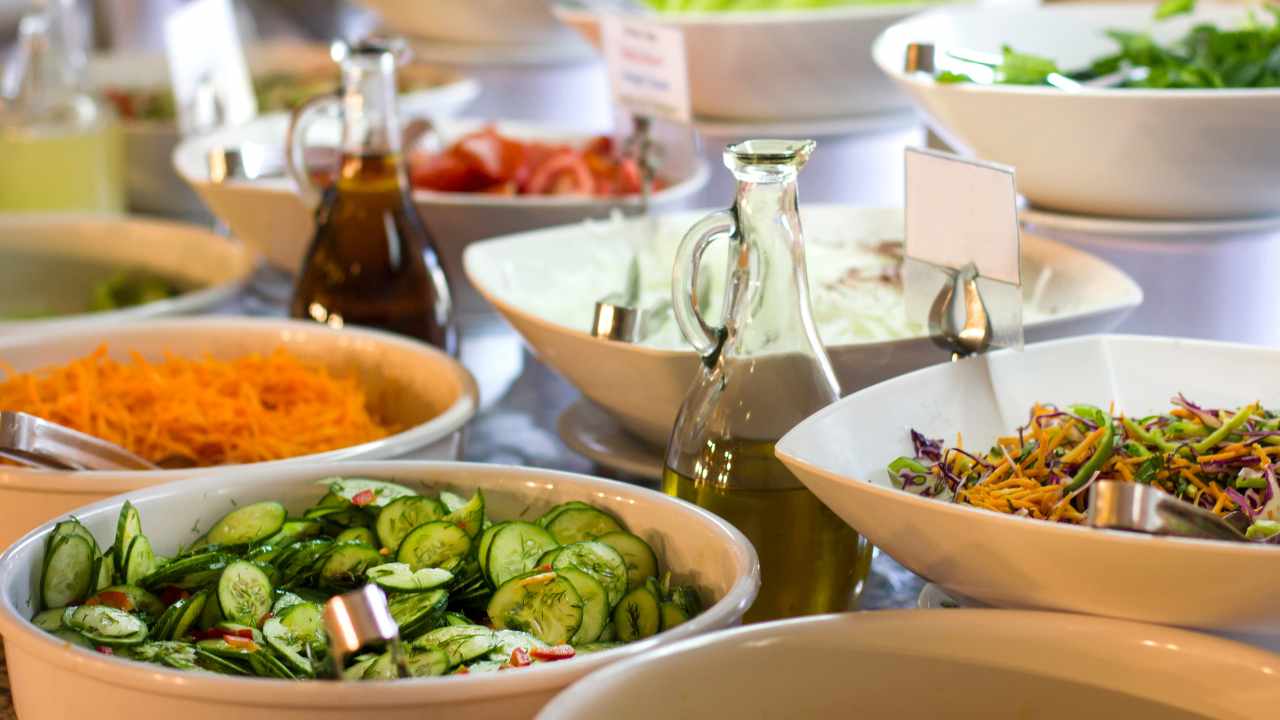Korean cuisine is renowned for its vibrant flavors, colorful dishes, and an artful balance of spicy, sour, sweet, and savory tastes. Among the many popular Korean side dishes, Korean cucumber salad, known as Oi Muchim (오이무침), stands out for its crisp texture, fresh aroma, and tangy-spicy flavor profile. But what exactly is in Korean cucumber salad? How is it made? And why has it become a favorite in Korean households and restaurants worldwide?
This comprehensive guide dives deep into the ingredients, preparation methods, variations, health benefits, and tips for enjoying Korean cucumber salad to the fullest. Whether you’re a beginner curious about Korean cuisine or a foodie looking to master this delicious side dish, this blog post will provide everything you need to know.
What Is Korean Cucumber Salad (Oi Muchim)?
Oi Muchim (오이무침) translates literally to “seasoned cucumber” in Korean. It is a simple, yet flavorful salad made primarily from fresh cucumbers seasoned with a combination of Korean spices, garlic, and often a touch of sweetness and acidity.
Also Read
Unlike the famous Korean cucumber kimchi (Oi Kimchi), which involves fermentation, Oi Muchim is a quick, no-fermentation salad meant to be served fresh and chilled. It acts as a cooling counterpart to spicy Korean main dishes and complements rice-based meals perfectly.
Key Ingredients in Korean Cucumber Salad
The hallmark of a great Korean cucumber salad lies in the harmony of its ingredients. The basic ingredients typically include:
Cucumbers
-
Korean cucumbers or English cucumbers are preferred for their crispness and fewer seeds.
-
Thinly sliced or cut into bite-sized pieces for easy eating.
Garlic
-
Fresh minced garlic provides pungency and depth of flavor.
Korean Red Chili Flakes (Gochugaru)
-
This is essential for that characteristic mild to medium spiciness and vibrant red color.
-
Learn more about gochugaru here (Maangchi is a trusted Korean cooking resource).
Sesame Oil
-
Adds nuttiness and richness to the salad.
Soy Sauce or Salt
-
For umami and seasoning. Salt is often preferred for a lighter taste.
Vinegar
-
Usually rice vinegar or apple cider vinegar for acidity and tang.
Sugar
-
A pinch of sugar balances out the acidity and spice.
Green Onions
-
Thinly sliced to add freshness and crunch.
Toasted Sesame Seeds
-
Garnish for extra texture and nutty aroma.
How to Make Korean Cucumber Salad: Step-by-Step
Here is a simple recipe to make classic Korean cucumber salad:
Ingredients:
-
2 Korean cucumbers (or 1 English cucumber)
-
1 tsp salt
-
2 cloves garlic, minced
-
1 tbsp gochugaru (Korean red chili flakes)
-
1 tsp sugar
-
1 tbsp rice vinegar
-
1 tsp soy sauce (optional)
-
1 tsp sesame oil
-
1 green onion, thinly sliced
-
1 tbsp toasted sesame seeds
Instructions:
-
Prepare the cucumbers: Wash and slice cucumbers thinly (either rounds or half-moons). Place in a bowl.
-
Salt the cucumbers: Sprinkle salt over cucumber slices and toss. Let sit for 10-15 minutes to draw out excess moisture. Then drain and gently squeeze out liquid.
-
Make the dressing: In a separate bowl, combine minced garlic, gochugaru, sugar, rice vinegar, soy sauce (if using), and sesame oil. Mix well.
-
Combine: Add the drained cucumbers and green onions to the dressing. Toss everything until the cucumbers are evenly coated.
-
Garnish: Sprinkle toasted sesame seeds on top.
-
Chill and serve: Refrigerate for at least 10 minutes before serving to allow flavors to meld.
Variations of Korean Cucumber Salad
While the above recipe is classic, there are many delicious variations based on personal preferences and regional differences:
-
Spicy Cucumber Salad: Increase the amount of gochugaru or add a bit of gochujang (Korean chili paste) for more heat.
-
Soy Sauce-Based: Some versions omit vinegar and rely on soy sauce and sesame oil for flavor.
-
With Korean Chili Oil: Adding chili oil (yuganeun yangnyeom) gives an extra kick.
-
With Sesame Leaves (Perilla): Chopped perilla leaves add an aromatic herbaceous note.
-
With Carrots or Onions: Thinly sliced carrots or onions can add color and crunch.
-
Vegan and Gluten-Free: Using tamari instead of soy sauce makes it gluten-free.
Health Benefits of Korean Cucumber Salad
Korean cucumber salad is not only tasty but also packed with health benefits:
-
Low in Calories: Cucumbers are mostly water and very low in calories, making this salad light and refreshing.
-
Hydrating: High water content in cucumbers helps in hydration.
-
Rich in Antioxidants: Gochugaru contains antioxidants and capsaicin, which may boost metabolism and reduce inflammation.
-
Digestive Health: Garlic and vinegar help promote healthy digestion.
-
Rich in Vitamins: Cucumbers contain vitamin K, vitamin C, and minerals like potassium.
For more health insights on Korean foods, visit Healthline’s article on Korean cuisine health benefits.
Tips for Making the Best Korean Cucumber Salad
-
Use fresh, firm cucumbers for the best texture.
-
Do not over-salt cucumbers; just enough to draw out water.
-
Adjust the amount of gochugaru based on your spice tolerance.
-
Let the salad chill for some time before serving to deepen flavors.
-
Serve as a side dish (banchan) with Korean meals like bibimbap, grilled meats, or stews.
Frequently Asked Questions (FAQ)
Q1: What type of cucumber is best for Korean cucumber salad?
A1: Korean cucumbers are ideal because they are crunchy with thin skins and fewer seeds, but English cucumbers also work well.
Q2: Is Korean cucumber salad spicy?
A2: It has a mild to moderate spice level, which can be adjusted by varying the amount of gochugaru.
Q3: Can I make this salad vegan?
A3: Yes! It is naturally vegan if you avoid soy sauce with fish additives or use tamari as a gluten-free alternative.
Q4: How long can I store Korean cucumber salad?
A4: Best consumed fresh within 1-2 days as cucumbers tend to release water and become soggy.
Q5: What dishes pair well with Korean cucumber salad?
A5: It pairs excellently with Korean BBQ, rice bowls, spicy stews (jjigae), and other banchan dishes.
Conclusion
Korean cucumber salad (Oi Muchim) is a perfect example of how simplicity can deliver a burst of flavor and texture. With its crisp cucumbers, spicy kick from gochugaru, and refreshing tang from vinegar, it complements a wide range of dishes and cuisines beyond Korean food lovers. Whether you want to try an authentic Korean recipe or adapt it with your favorite ingredients, this salad is a quick and healthy way to brighten your meals.
By incorporating this salad into your cooking repertoire, you embrace not only a delicious dish but also a healthy and vibrant lifestyle inspired by Korean culinary traditions.





